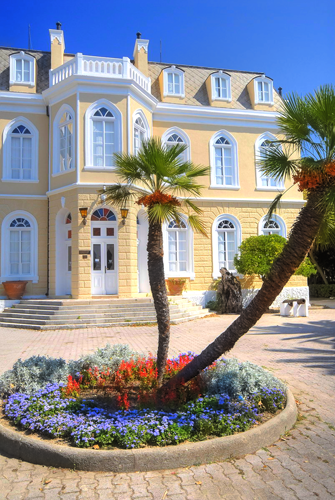Posted in Cultural and historical monuments

It was built in 1885 on the seashore. The palace was a present from King Nikola to his daughter Princess Zorka and his son-in-law Prince Petar Karađorđević. It consisted of a large palace, a little palace, a chapel, guardhouses and a winter garden. In 1910 a spacious ballroom was built in the palace. As part of the palace, there is a park with many different species of Mediterranean vegetation, among them a cork tree. In front of the palace, there was a wooden pier, which served as a mooring for boats and yachts.
During the period between 1866 and 1916 King Nikola owned ten yachts. One of them, named “Sibil” was bought from novelist Jules Verne, while the last yacht he bought, called “Rumija” was sunk in 1915 by the Austro-Hungarian navy in the area of today’s harbour.
Here, one can also find a large flower garden, made of a stainless steel structure of interesting shape, which was given as a present by the Italian king, Emanuel, and which is nowadays used as the restaurant called “Knjaževa bašta” (“The Duke’s Garden”)
.
Nowadays, the palace building complex is used as the Homeland Museum of the City of Bar, as well as for festivals (concerts, exhibitions and literary events).